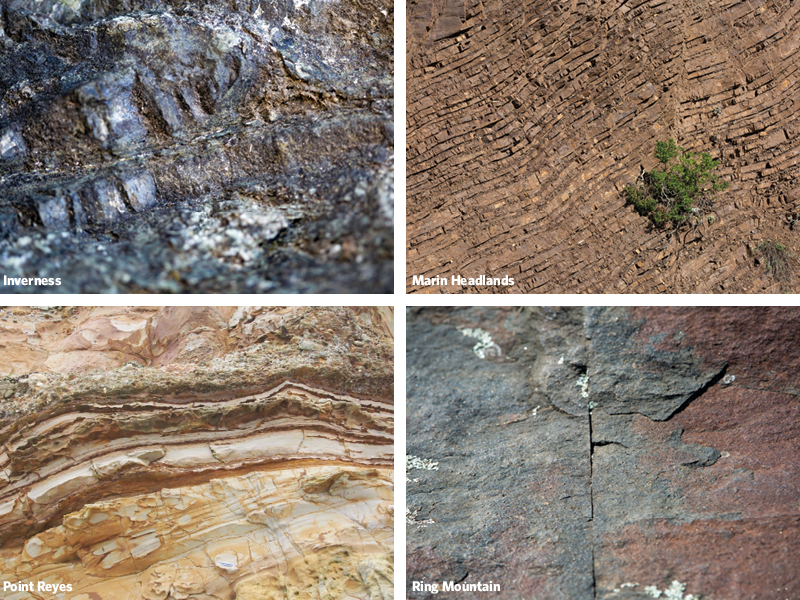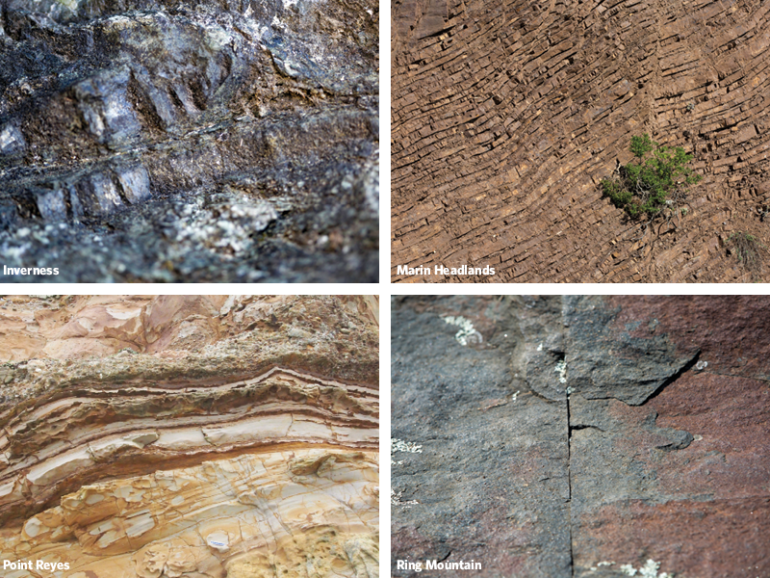Marin is an idyllic place for those with an urge to explore. And though it is easy to focus solely on the views, College of Marin geology professor Steven Newton suggests occasionally looking down — or up — to observe the impressive plethora of rocks that comprise the land we love. “The most common rock type in Marin is greywacke (a dirty sandstone formed underwater by a variety of rock fragments),” he says, “but there is plenty more to unearth, depending on where you are.” Here, some of the best local spots to indulge your inner geologist.
Inverness Just past the city of Inverness lies a weathered granite cliff face, easily viewed and examined from an unassuming pullout. A favorite field trip stop of Newton’s, the wall of granite showcases quartz and other minerals contained within and, according to the professor, “looks just like granite you would find in the Tehachapi Mountains in Southern California.”
Point Reyes The Point Reyes conglomerate is a sandy, exposed sedimentary formation showcasing large, rounded grains that have been sculpted by water over millions of years, resting atop a granite foundation. For a different kind of geologic excursion, Newton recommends walking the earthquake trail near the Bear Valley Visitor Center; the parking lot lies directly on the San Andreas Fault.
Marin Headlands A leisurely drive along Conzelman Road reveals well-exposed chert, a fine-grained sedimentary rock also visible along the local hiking trails. And if you find yourself at Point Bonita Lighthouse, Newton suggests keeping an eye out for pillow basalts, which he describes as “scrapings of the ocean floor that have been metamorphosed, or cooked by heat and pressure.”
Ring Mountain Ring Mountain is an easily accessible area that, according to Newton, is rife with serpentinite, a greenish, metamorphic specimen that happens to be the state rock of California. “There are a couple other rocks up there that have been really cooked and altered,” says Newton, citing eclogite — which features a mixture of red garnet, green omphacite and blue glaucophane — and blueschist as examples.



